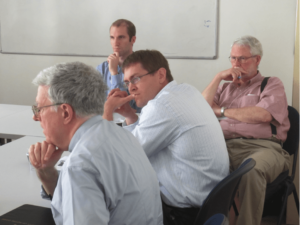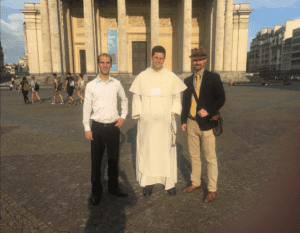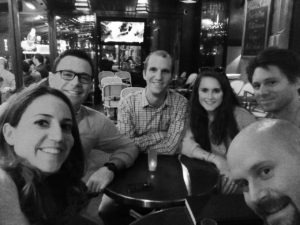“Enlightened” Philosophy in Paris

What you see in the photo above and below is the Pantheon, originally the church of St. Genevieve, the patroness of Paris. In the French Revolution, it was gutted and made into a temple of Reason, that is, a symbol of the new patroness of Paris, who rejected religion as superstition and envisioned humanity itself as the purpose of its existence – aided by science – and redefined as modern science. This helped France come out of the “Dark Ages” (a derogatory term given to it by the same enlightened people) into the freedom of being enlightened.
Actually…no, we didn’t really change anything physically of significance. But an excellent affirmation of the continued contribution of Middle Ages (the non-derogatory term) was given by Remi Brague in his keynote address for the Symposium Thomisticum: To Which Middles Ages? And How? (I’m currently looking for a copy).
On the 19th of June I travelled to Paris for the philosophy conference to present my recent paper. The other presenters, including Remi Brague, Kevin Flannery and John Haldane, definitely gave me a lot to think about with their presentations.
paper. The other presenters, including Remi Brague, Kevin Flannery and John Haldane, definitely gave me a lot to think about with their presentations.
I also am thankful for the feedback on a summary version of my paper “Thomas and Custom: Discovering Justice Empirically.” It is an explanation for why customs, or habits shared by a community, are a reasonable source for human laws and should not be easily changed (Summa Theologiae I.II.97.2-3). It is not claiming that what is right always has its source in convention. Rather, since humans make practical decisions from the natural law written in them and are also inclined toward virtue, and since habit and habituation is a source of of virtue – unnecessarily changing those ‘silly’ habits which do not conflict with the natural law by means of statutory law is unjust. Customs may even already take on the force of human law, since the people who the legislator represents in a free society are the source of his authority.






